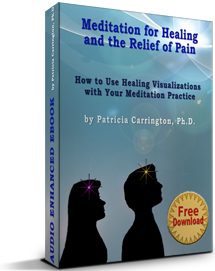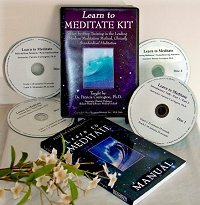Dr. Patricia Carrington's award winning meditation technique CSM (Clinically Standardized Meditation) is a clinically sensitive meditation method developed by the Medical Department of New York Telephone Company and used by numerous medical institutions, organizations, and individuals worldwide. For information click here.
Tips for Success in Meditating
Effects of Body Rhythms on Meditation
Patricia Carrington, Ph.D.
Author of “The Book of Meditation”
Human beings, like all other animals, and like the primordial oceans from which we sprang, are subject to cyclic highs and lows, so that we are literally a different person from one hour to another. On thousands of scores, we all change physically and emotionally in response to daily, monthly and yearly rhythms. We are aware of some of these rhythms – as when our hunger increases, our energy ebbs or flows, or we feel drowsy or wakeful – but we may be totally unaware of other changes in us, such as body temperature, which also take place in a cyclical manner.
|
MEDITATION AUDIO LESSON Establishing a Meditation Routine
Dr. Carrington explains the benefits of meditating first thing in the morning and in the late afternoon, with suggestions for when you are unable to mediate at those times. |
The body temperature of human beings regularly varies from a low point in the small hours of the morning (whether we are awake or asleep) to a high point in the afternoon. This occurs in every person who is active by day and sleeps by night, and is such a persistent rhythm that even enforced inactivity over a long period of time can’t alter it except under very unusual conditions – and then only partially.1 Despite a regular daily fluctuation of one to two degrees in the body’s temperature, however, we ordinarily don’t recognize this change while it is occurring. In the same way, liver and kidney functions, brain chemistry, blood sugar levels, blood hormone levels and a host of other bodily processes differ markedly from hour to hour.
Even sensitivity to taste and smell is different in the morning from the way it is in the evening, as are the effectiveness of our memory, ability to learn and capacity to make fine discriminations. Some of these changes may determine our resistance to stress at different times of the day. Pain tolerance can vary according to the hour, and allergies may follow a timetable, peaking at one time of the day and almost disappearing at another.
Daily highs and lows in adrenal hormone levels are closely related to the way we cope with stress. As Gay Luce points out, a certain dose of amphetamines can kill 77.6 percent of a group of animals when given at one time of day but the identical dose will kill only 6 percent of these animals when administered at another time of day.2 The animals’ times of high resistance to these drugs correspond to the level of adrenal hormones in their blood. Similarly, a medicine administered to a person at one hour of the day may have a different effect from the same medicine administered at another hour, a fact now beginning to be recognized by physicians.
1. N. Kleitman, Sleep and Wakefulness (Chicago: University of Chicago Press, 1963), pp. 145–7
2. G. G. Luce, Body Time (New York: Bantam Books, 1973), p. 45.


